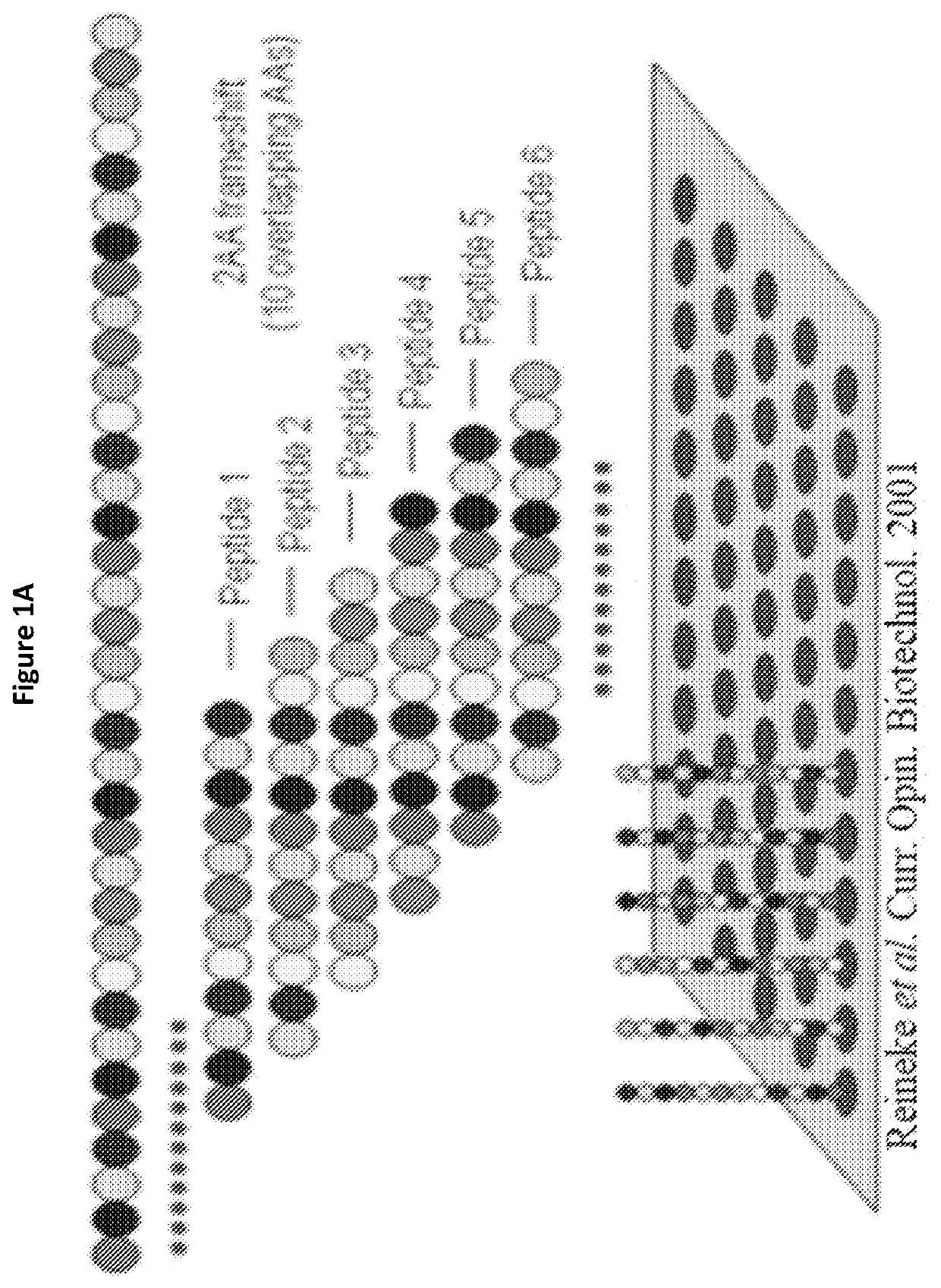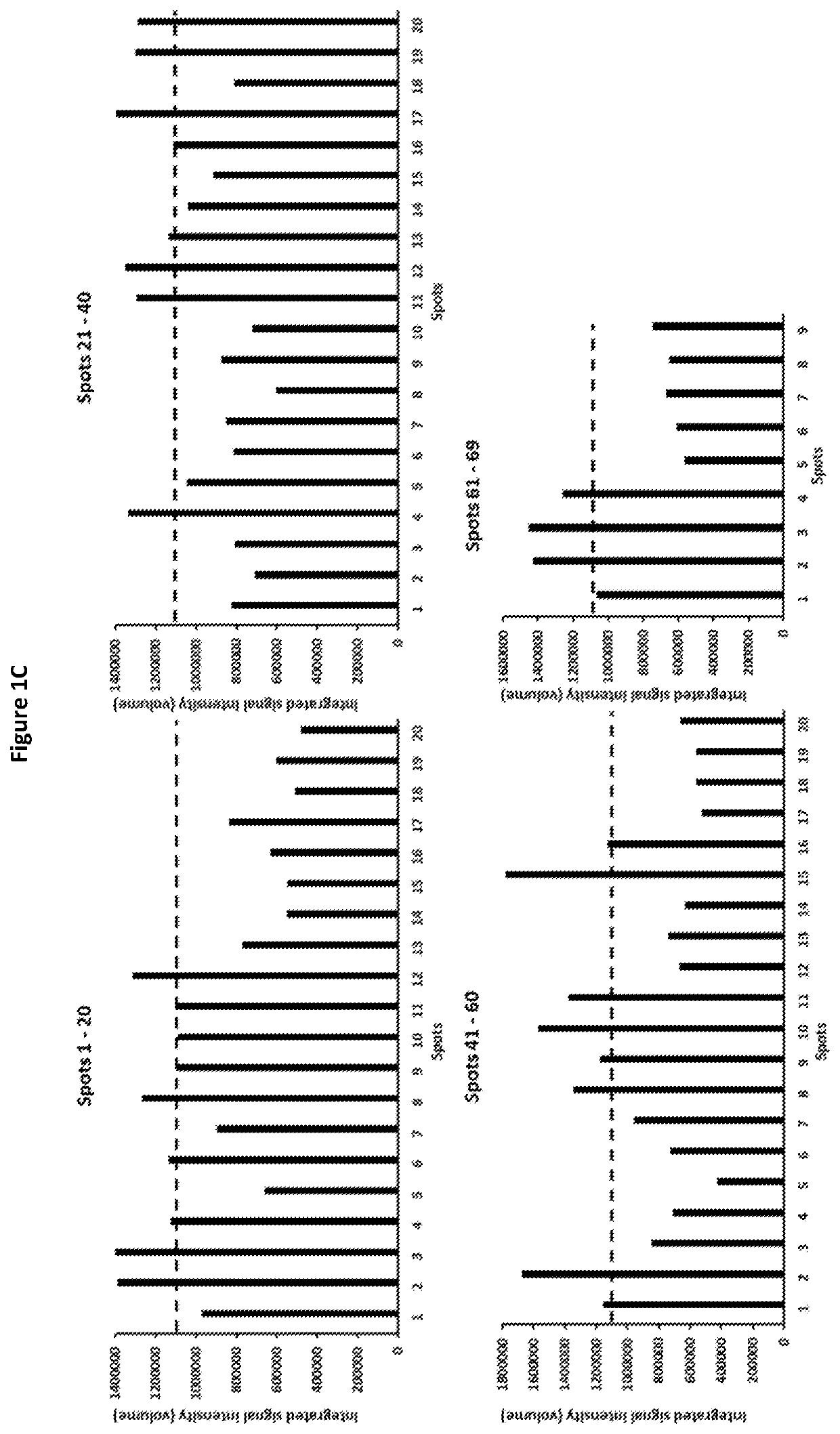Mutant vaccinia viruses and use thereof
a technology of vaccinia virus and vaccinia spp., which is applied in the field of vaccinia virus mutation, can solve the problems of limiting the ability of the virus to persist long, affecting the survival rate of the tumor, and the approach may not be suitable for some tumors, so as to improve the tumor specificity, improve the effect of tumor survival rate, and reduce the ability to induce antiviral immune respons
- Summary
- Abstract
- Description
- Claims
- Application Information
AI Technical Summary
Benefits of technology
Problems solved by technology
Method used
Image
Examples
example 1
Materials and Methods
Materials
[0127]pUC57-Amp A27L, pUC57-Amp L1R, pUC57-Amp D8L, pUC57-Amp H3L, (GENEWIZ). CV-1 cells (ATCC, cat. #CCL-70). vSC20 Vaccinia virus stock. GeneJuice Transfection Reagent (Millipore, cat. #2703870). DMEM media (GE Helathcare, cat. #SH30081.01), FBS (GE Healthcare, cat. #SH30070.03), DPBS (Sigma, cat. #8537). Dry ice / ethanol bath, 6-well tissue culture plates, 12×75-mm polystyrene tubes, disposable scraper or plunger from a 1 ml syringe, sterile 2-ml sterile microcentrifuge tubes.
Cell Preparation and Infection with Wild-Type Vaccinia Virus
[0128]CV-1 cells (2×105 / well) were seeded in wells of a 6-well tissue culture plate in complete DMEM medium and incubate to 50-80% confluency (37° C., 5% CO2 overnight). An aliquot of parental virus was thawed and sonicated (30 sec) in ice-water several times to remove the clumps (cool on ice between each sonication). Virus was diluted in complete DMEM to 0.5×105 pfu / ml. Medium was remove from confluent monolayer of cell...
example 2
Neutralizing Antibody (Nab) Epitope Determination on H3L—Peptide Arrays Sequence Analysis
[0134]To identify possible regions on H3L that participate in the NAb interaction, peptide arrays encompassing full-length H3L were synthesized and screened for peptides that bound the anti-VV NAb. The array started at the N terminus of H3L and spanned the entire length of the protein sequence, with each successive spot containing 12 amino acids along the sequence shifted by 4 amino acids toward the C terminus, i.e., each spot in the array had an 8-residue overlap with the previous spot. Cellulose membrane containing synthesized H3L peptide array was then screened to identify peptides that bound to anti-VV polyclonal NAb (Abcam, ab35219). Briefly, the membrane was washed three times for 5 min in Millipore H2O and blocked overnight at 4° C. with 5% (wt / vol) milk-PBS (MPBS). Four μg / mL NAb was incubated with the membrane in MPBS for 3 h at room temperature with gentle agitation. After incubation, ...
example 3
NAb Epitope Determination of H3L—Alanine Scan of the Identified Peptides
[0137]To further map the NAb epitopes and to elucidate the key residues on the H3L peptides identified by our peptide array study, a series of ELISAs were performed with the 9 identified peptides and their alanine-substituted variants (FIG. 2). Variants of the 9 peptides identified by peptide array were synthesized with alanine substitutions (GenScript USA Inc. NJ, USA).
TABLE 4Total of 80 variant peptides were synthesizedPeptide 1Peptide 2Peptide 3(SEQ ID NO: 89)(SEQ ID NO: 90)(SEQ ID NO: 91)AVIDRLP (SEQADQKFDDVKDNAKRNVVVVID NO: 98)(SEQ ID NO: 105)(SEQ ID NO: 116)PAIDRLP (SEQNAQKFDDVKDNEARNVVVVID NO: 99)(SEQ ID NO: 106)(SEQ ID NO: 117)PVADRLP (SEQNDAKFDDVKDNEKANVVVVID NO: 100)(SEQ ID NO: 107)(SEQ ID NO: 118)PVIARLP (SEQNDQAFDDVKDNEKRAVVVVID NO: 101)(SEQ ID NO: 108)(SEQ ID NO: 119)PVIDALP (SEQNDQKADDVKDNEKRNAVVVID NO: 102)(SEQ ID NO: 109)(SEQ ID NO: 120)PVIDRAP (SEQNDQKFADVKDNEKRNVAVVID NO: 103)(SEQ ID NO: 110)(S...
PUM
| Property | Measurement | Unit |
|---|---|---|
| Molar density | aaaaa | aaaaa |
| Molar density | aaaaa | aaaaa |
| Time | aaaaa | aaaaa |
Abstract
Description
Claims
Application Information
 Login to View More
Login to View More - R&D
- Intellectual Property
- Life Sciences
- Materials
- Tech Scout
- Unparalleled Data Quality
- Higher Quality Content
- 60% Fewer Hallucinations
Browse by: Latest US Patents, China's latest patents, Technical Efficacy Thesaurus, Application Domain, Technology Topic, Popular Technical Reports.
© 2025 PatSnap. All rights reserved.Legal|Privacy policy|Modern Slavery Act Transparency Statement|Sitemap|About US| Contact US: help@patsnap.com



